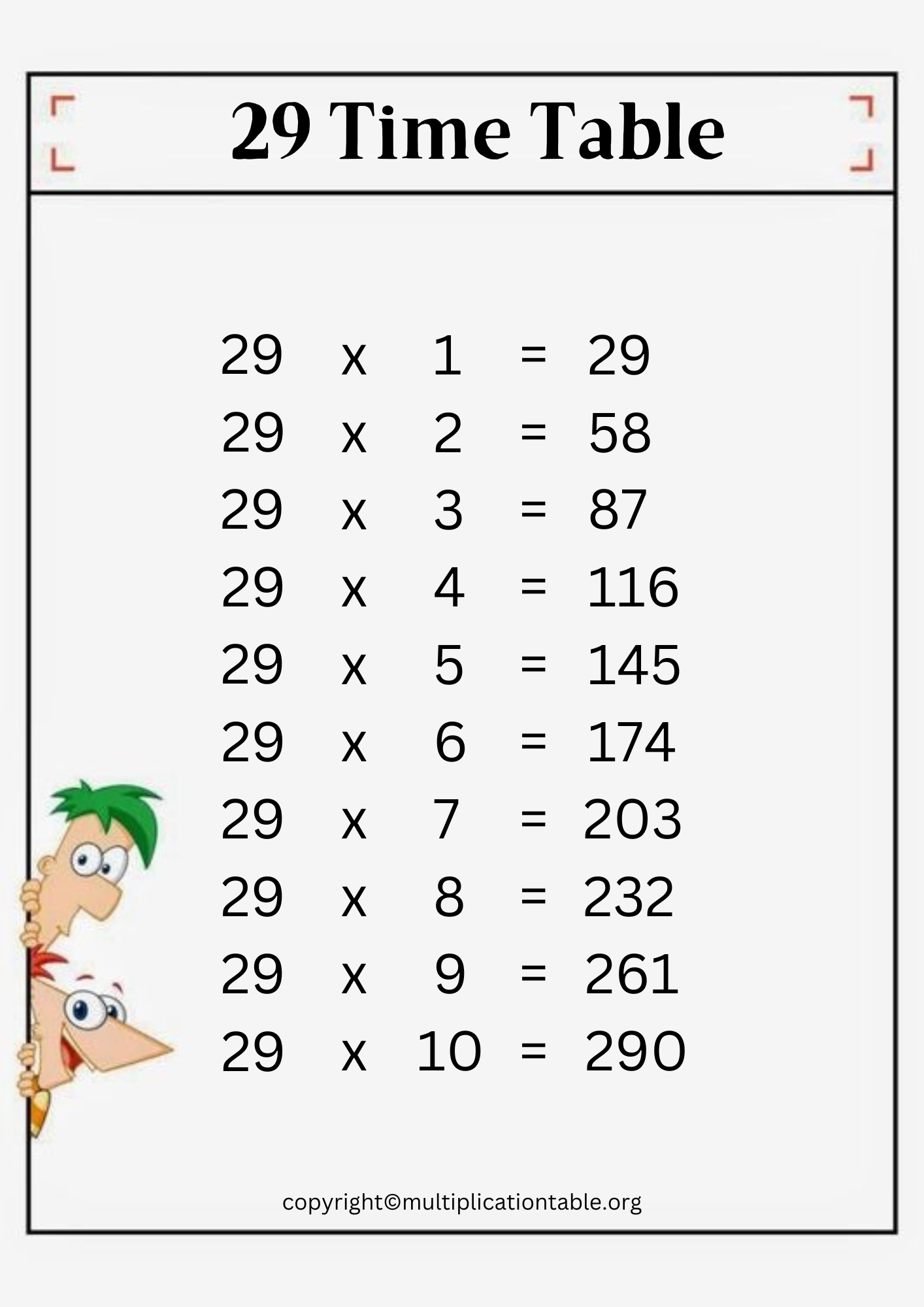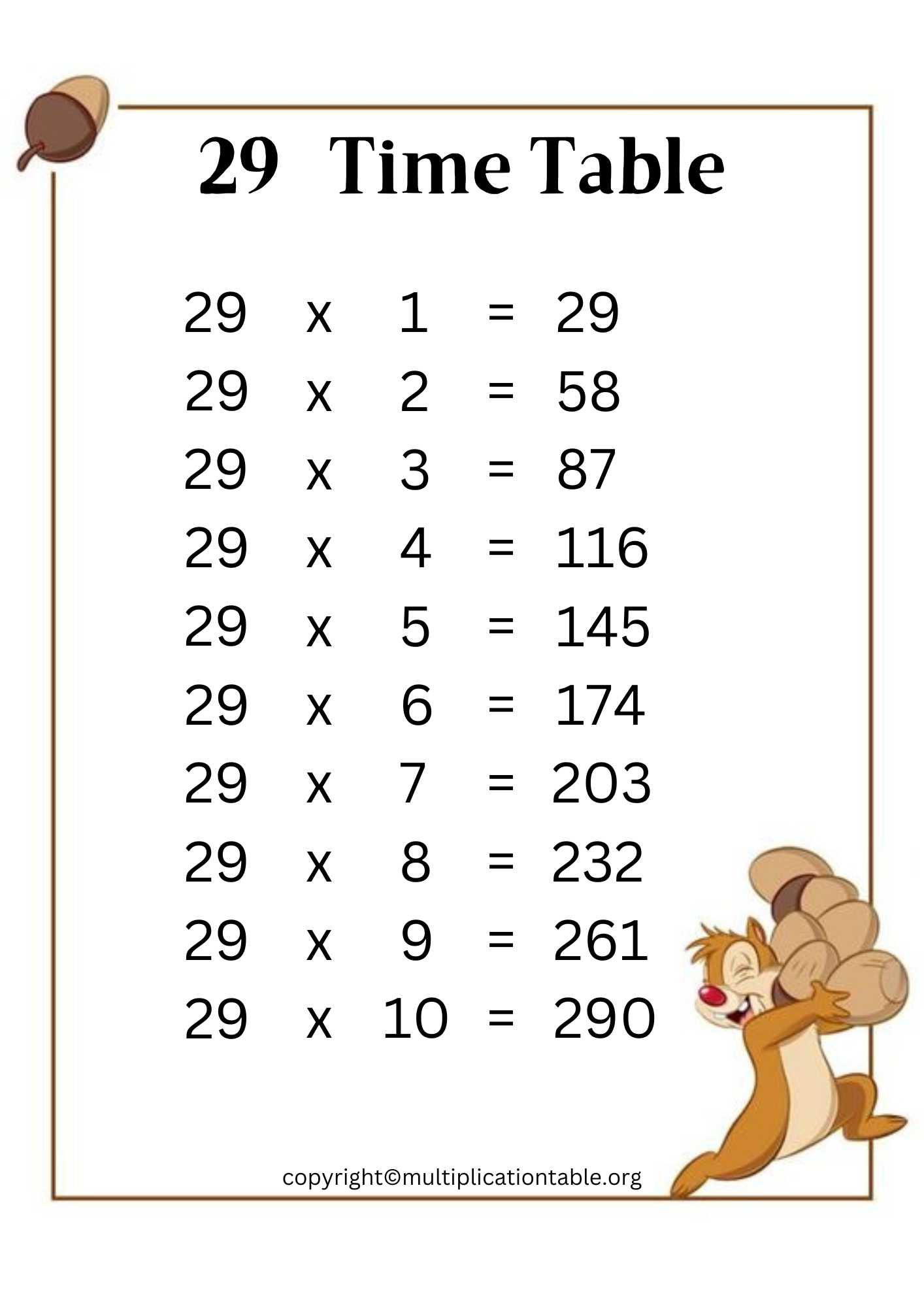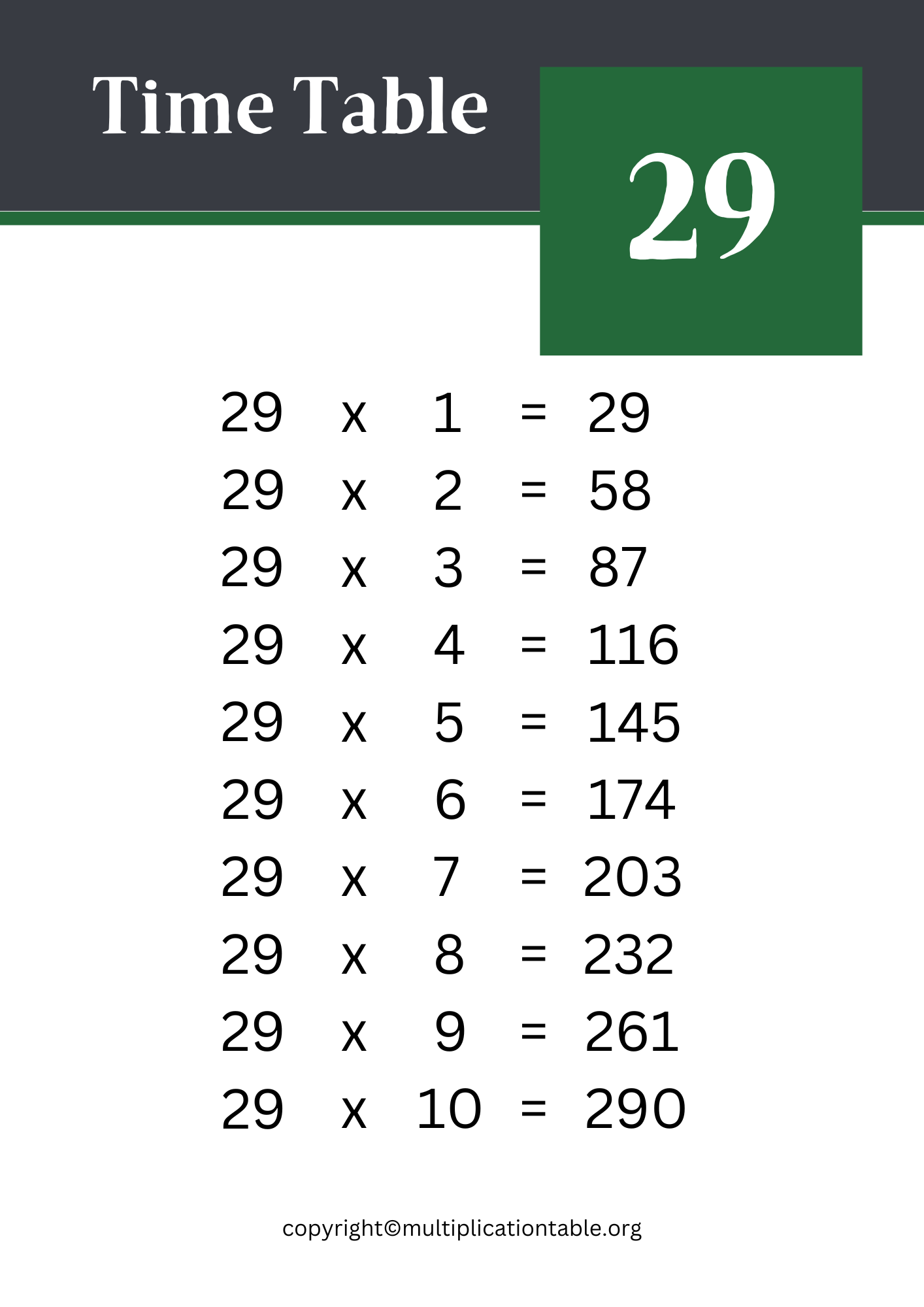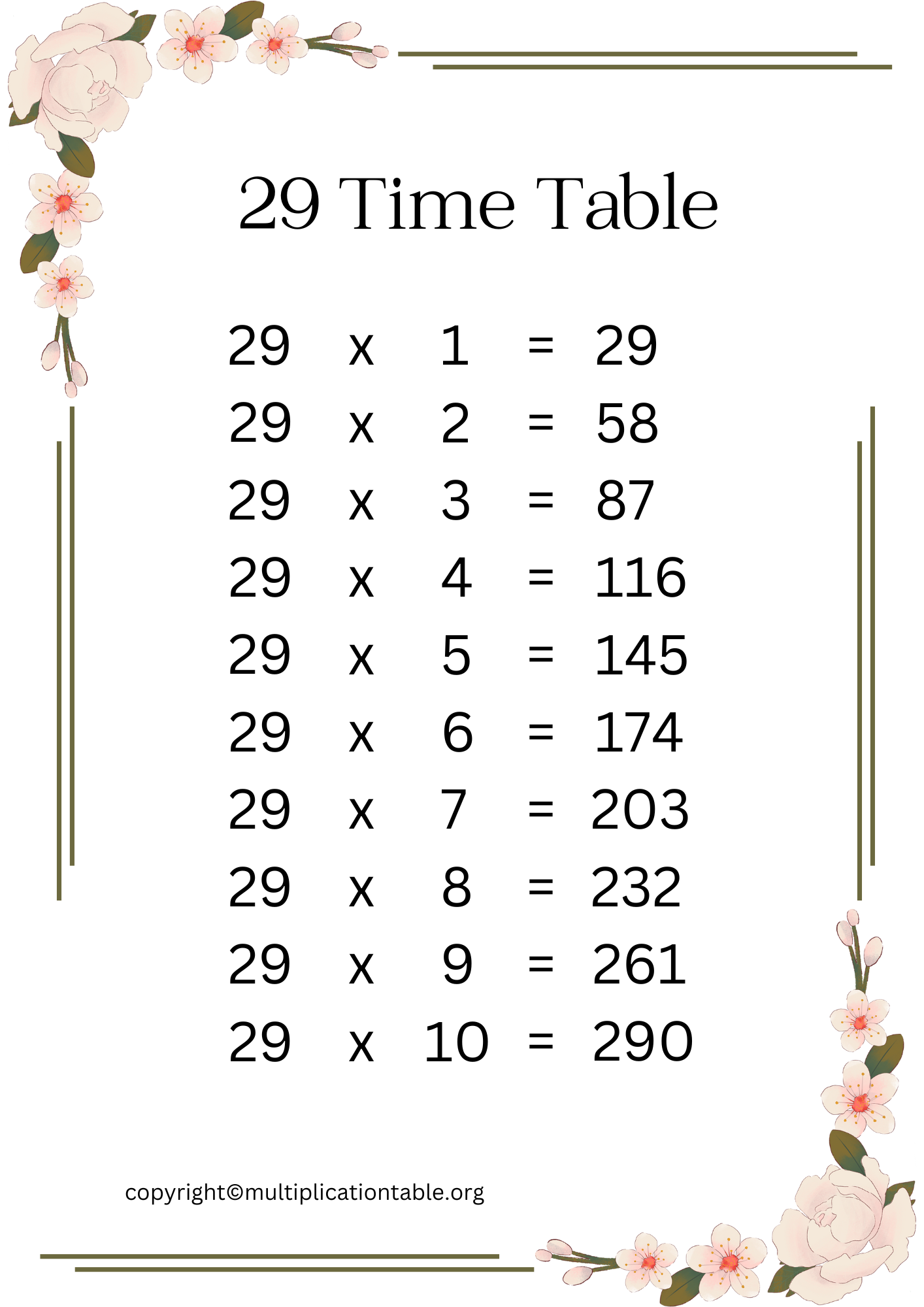29 Times Table-Around the world, students learn their multiplication tables to help them with basic math skills. The table that is learned first is the 2 times table, then the 10 times table, and finally the more difficult ones like the 6 and 7 times tables. The last step is usually the hardest, which is learning the 29 times table.
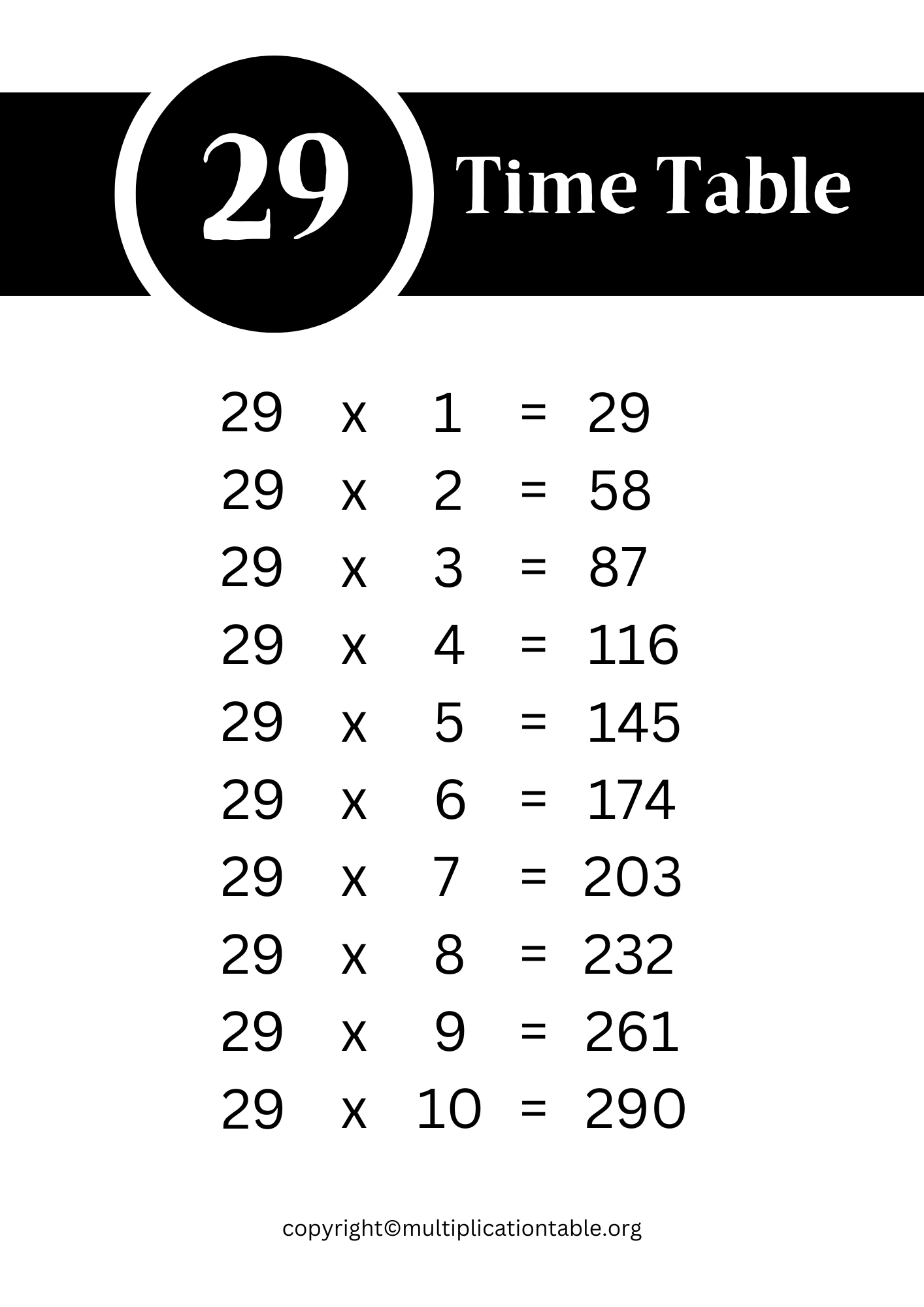
Check our other related articles about times table:
- 2 Times Table
- 3 Times Table
- 5 Times Table
- 6 Times Table
- 7 Times Table
- 8 Times Table
- 10 Times Table
- 11 Times Table
- 12 Times Table
- 13 Times Table
- 14 Times Table
- 15 Times Table
- 16 Times Table
- 17 Times Table
Why is the 29 times table so important? Because it is a prime number, it can be used to calculate many other multiplication tables.
Printable 29 Times Table
The 29 times table can be a useful tool for students who are trying to learn multiplication facts. This table can help them see patterns and notice relationships between numbers. Additionally, it can help them memorize the facts more easily.
There are a few different ways to use the 29 times table. One way is to simply print it out and hang it up somewhere where it can be seen often. This will help keep the information fresh in the student’s mind. Another way to use it is to create flashcards with the information on them. These can be used for drills and practice at home or in the classroom.
29 Multiplication Table
The 29 times table is an important multiplication table to learn. It can be used to help with many things in life, such as calculating prices, measuring ingredients and more. Here are a few tips to help you learn the 29 times table:
1. Practice regularly – A good way to learn anything is to practice regularly. This means setting aside some time each day to work on your multiplication skills. If you can find a quiet spot where you won’t be interrupted, that’s ideal. But even if you have to practice in short bursts throughout the day, that’s better than nothing!
2. Use a visual aid – Sometimes it helps to see what you’re doing in order to understand it better. If you’re a visual learner, try creating a chart or diagram of the 29 times table.
29 Multiplication Chart Printable
The 29 times table is a great resource for students who are struggling with multiplication. This chart can help them to see the patterns in multiplication and understand how to multiply numbers by 9. It is also a good way for students to practice their multiplication skills.
Free twenty-nine Times Table PDF
Are you looking for a fun and engaging way to help your child learn their times’ tables? If so, you may want to consider using a Free twenty-nine Times Table PDF. Plus, it’s a great way for your child to practice their multiplication skills.
There are many benefits of using a Free twenty-nine Times Table PDF. For one, it’s a great way for your child to review their timetables. Additionally, it can help them memorize the information more easily. Plus, it’s also a great way for you to check their work and see how they are progressing.
Overall, using a Free twenty-nine Times Table PDF is a great way to help your child review their timetables and memorize the information more easily.
A printable number 29 multiplication table is a great way to help your child memorize multiplication facts. It is also a handy reference for when they are doing their homework or working on a project. Just print out the table and keep it in a convenient place.
To use the table, have your child find the number 29 at the top of the chart. Then, have them trace down that column until they reach the row with the number they want to multiply by. For example, if they want to know what 7 times 29 is, they would trace down the column until they reach row 7. Finally, have them trace across to the answer column to find the answer: 203.
The Free twenty-nine Multiplication Table Chart PDF is a great way to help your child learn their multiplication tables.
When learning the twenty-nine times table, it is important to start with the basics. Begin by having your child recite the multiplication facts for 2-9. Once they have mastered these, they can move on to learning the commutative property of multiplication. This states that when two numbers are multiplied together, the order does not matter. For example, 4×9=36 and 9×4=36.
Once your child has mastered the basics of the twenty-nine times table, they can begin to understand more complex concepts such as factor pairs and square numbers.
